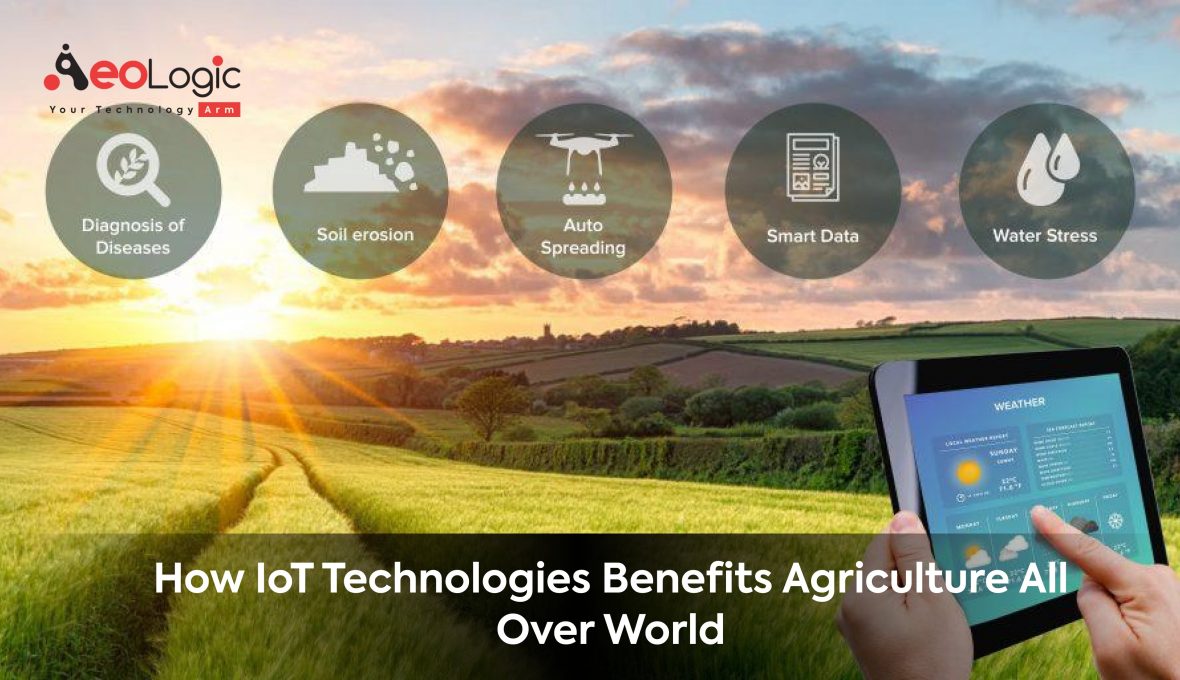In an era where technology intertwines with tradition, the benefits of IoT technology in agriculture are creating waves. From drought-prone lands to bustling farm centers, IoT ensures healthier crops and happier farmers.
Crops now “communicate” their needs; cattle share their health status through wearables. Each plant and animal transformed into a data point, guiding farmers towards optimal yields.
And this tech magic isn’t just for farms. Remember the IoT Asset Tracking Benefits for Hospitals in 2023? If hospitals can harness IoT for efficiency, imagine what it’s doing for agriculture. Dive into the future. Embrace smart farming.
Also Read: How AI is Improving Agriculture Sustainability in India
Factors to Consider Before Building Your Smart Agriculture Solution
Incorporating IoT into agriculture might seem like an instant recipe for success. However, a few considerations are crucial before diving into building a smart agricultural solution. Here’s a breakdown:
1. Cost-Benefit Analysis
The introduction of IoT in agriculture requires an initial investment in devices, infrastructure, and training. It’s essential to weigh these initial costs against the potential long-term benefits in terms of increased yield, reduced waste, and other efficiency gains.
2. Connectivity and Infrastructure
Remote farms might struggle with connectivity issues. Before implementing an IoT solution, it’s vital to ensure a stable internet connection, be it through traditional networks or satellite connectivity.
3. Scalability
As farms grow and technology evolves, your IoT solution should be scalable. Choosing systems that can easily integrate newer devices or adapt to larger data volumes is essential.
4. Data Security
With the increasing threats of cyber-attacks, ensuring the security of the data collected and transmitted by IoT devices is paramount. Employ encryption and other security measures to protect sensitive agricultural data.
5. Training and Usability
Sophisticated technology is only as good as its user. Farmers and farm workers should be adequately trained to utilize IoT solutions. Moreover, the interface and usability of the system should be intuitive, ensuring smooth adoption.
6. Interoperability
Often, farms might use devices from various manufacturers. Ensuring these devices can seamlessly communicate and share data is crucial. Opt for systems and solutions that prioritize interoperability.
7. Environmental Resilience
Agricultural IoT devices are exposed to the elements. Whether it’s heavy rainfall, intense sun, or frost, your devices should be resilient and durable enough to withstand varied environmental conditions.
8. Maintenance and Support
Like all tech solutions, IoT systems in agriculture will require maintenance, software updates, and occasional troubleshooting. Ensure that the chosen solution comes with robust support and easy maintenance provisions.
While the benefits of IoT technology in agriculture are undeniable, a thoughtful and informed approach is key to truly harness its potential. Smart agriculture is not just about integrating technology; it’s about doing so strategically, with a clear vision of the challenges and the desired outcomes.
Also Read: Farmer Centric Solutions for Agriculture Sector in India
Top 10 Benefits of IoT Technology in Agriculture
The benefits of IoT technology in agriculture extend beyond simple mechanization, infusing the sector with precision, efficiency, and sustainability. Let’s take a deeper dive into these perks:
1. Precision Farming
The data collected from IoT devices facilitates evidence-based decisions about planting, fertilizing, and harvesting. It’s no longer about generalizing treatments; each plant receives its required nutrients, water, and care based on exact needs. The result? Healthier crops, better yields, and a reduced use of resources.
2. Enhanced Water Management
Soil sensors, by monitoring moisture levels, optimize irrigation schedules. Such targeted watering ensures that plants receive moisture precisely when required, thus conserving water and promoting healthier growth, especially in regions grappling with water scarcity.
3. Disease and Pest Prediction
Advanced IoT systems can process vast amounts of data, including weather patterns, soil conditions, and historical disease outbreaks. By predicting potential threats, farmers can proactively deploy preventive measures, ensuring crops remain healthy and yields unaffected.
4. Livestock Monitoring
Livestock wearables offer a panoramic view of animal health, from vital signs to behavioral patterns. By detecting anomalies early, farmers can address health concerns promptly, ensuring livestock well-being and optimizing productivity.
5. Storage and Supply Chain Monitoring
Advanced sensors continuously monitor factors like temperature and humidity in storage facilities. By maintaining ideal conditions, the shelf life of the produce is extended, reducing economic losses and ensuring consumers get fresh products.
6. Real-time Monitoring
Whether it’s a sudden frost warning or a system malfunction, IoT-enabled devices provide farmers with immediate notifications. Swift responses to such alerts can make the difference between a successful harvest and a compromised one.
7. Farming Automation
The dawn of IoT has brought forth tractors that can autonomously plant seeds at exact depths and intervals. Drones, too, have entered the agricultural arena, serving diverse roles from crop monitoring to precise pesticide application, ensuring uniformity and reduced chemical usage.
8. Data-driven Forecasting
IoT doesn’t just focus on the farming aspect; it also aids in business decisions. With accumulated data, farmers can predict market demands, potential crop prices, and even consumer trends. This strategic foresight helps them align their production for maximum profitability.
9. Environmentally Sustainable Practices
IoT’s ability to minimize resource wastage goes beyond cost-cutting. It represents a significant leap towards environmentally sustainable agriculture, ensuring that future generations inherit a green and bountiful Earth.
10. Enhanced Safety
Beyond crop and livestock monitoring, IoT plays a pivotal role in ensuring the safety of farm workers. Devices can detect machinery malfunctions early, while wearables can monitor the well-being of workers in real time, ensuring that any medical or safety concerns are immediately addressed. (www.utahcnacenters.com)
Boost your business with our IoT Solutions
Final Words
The benefits of IoT technology in agriculture paint a picture of a sector that’s evolving rapidly. It promises an era where food production meets the demands of a growing population without compromising the health of our planet. As technology and agriculture intertwine, the future looks not just productive, but also sustainable and secure.
Why Choose Aeologic for Agriculture IoT Solutions?
In our journey to explore the intricacies and opportunities of IoT in agriculture, it’s evident that the right technological partner can make all the difference. When envisioning a future that seamlessly marries traditional farming with groundbreaking technology, Aeologic Technologies emerges as a beacon of innovation. Our commitment to ushering in an era of smart agriculture, combined with their deep-rooted expertise in IoT, makes them an ideal ally for any agricultural endeavor.
Connect with Aeologic Technologies and set the foundation for a future where every grain sown is backed by data, insight, and precision. Let’s cultivate tomorrow, today.






